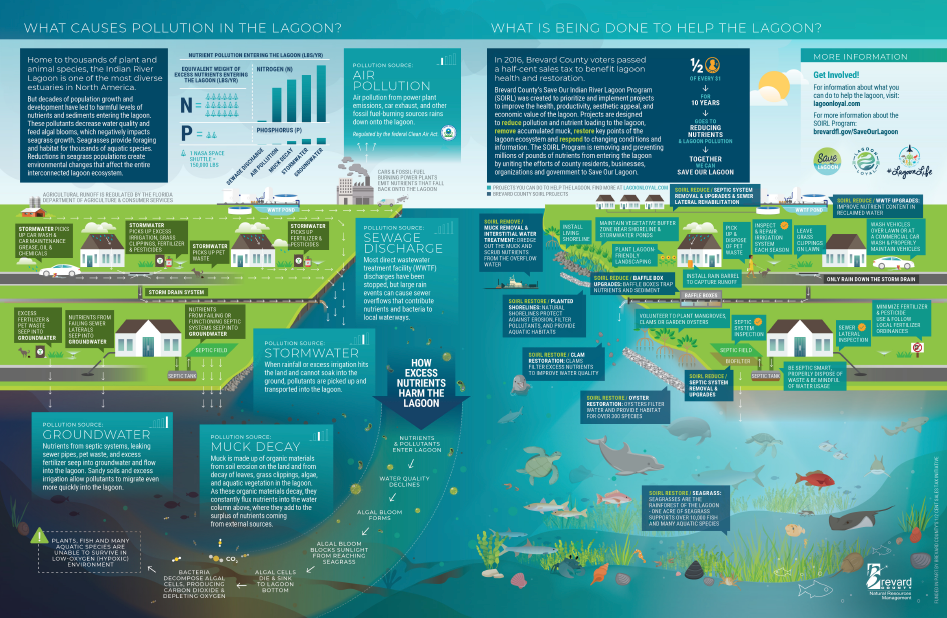Save Our Indian River Lagoon

The Save Our Indian River Lagoon Program in Brevard County, Florida is a multi-faceted program aimed at protecting and restoring the Indian River Lagoon, which is an estuary that runs along the eastern coast of Florida. The Indian River Lagoon is the most biodiverse estuary in North America and is home to over 4,000 species of plants and animals, including manatees, dolphins, and sea turtles.
The Save the Lagoon effort was launched in 2011 by a group of local residents, business owners, and government officials who were concerned about the health of the lagoon. The effort is focused on addressing the major causes of the lagoon’s decline, which include pollution, poor water quality, and habitat destruction.
One of the main components of the Save the Lagoon effort is the implementation of best management practices (BMPs) for septic systems and stormwater runoff. This includes promoting the use of low-impact development techniques, such as rain gardens and permeable pavements, to reduce the amount of pollutants that enter the lagoon from these sources. The effort also includes the promotion of proper septic system maintenance, which helps to reduce the amount of nitrogen and phosphorous that enters the lagoon from septic systems.
Another key component of the Save the Lagoon effort is the restoration and preservation of the lagoon’s habitat. This includes the planting of seagrasses, mangroves, and other native plants, as well as the creation of oyster reefs and artificial reefs. These efforts help to improve water quality, provide food and shelter for wildlife, and promote the recovery of the lagoon’s fish and shellfish populations.
In addition to these efforts, the Save the Lagoon effort also includes public education and outreach programs to raise awareness about the importance of protecting the Indian River Lagoon. This includes the development of educational materials and the hosting of events, such as cleanups and educational tours, to engage the public and encourage them to take action to protect the lagoon.
The Save the Lagoon effort has made significant progress in addressing the major causes of the Indian River Lagoon’s decline, however, more work still needs to be done. The Indian River Lagoon continues to face challenges such as pollution and habitat destruction, and the effort will require continued support and collaboration from government agencies, businesses, and the community to ensure its success.
In conclusion, the Save the Lagoon effort in Brevard County, Florida is a multi-faceted program aimed at protecting and restoring the Indian River Lagoon. The effort is focused on addressing the major causes of the lagoon’s decline, such as pollution, poor water quality, and habitat destruction. The Save the Lagoon effort includes the implementation of best management practices, habitat restoration, and public education and outreach programs. The Indian River Lagoon is a vital resource for the region, and the Save the Lagoon effort is essential to ensure its protection and preservation for future generations.




